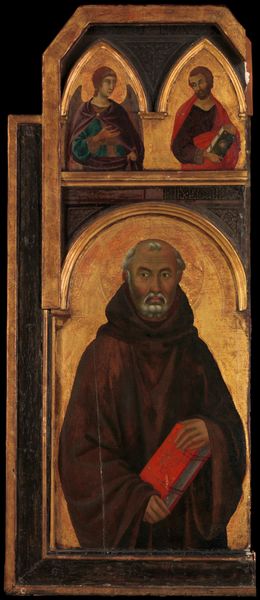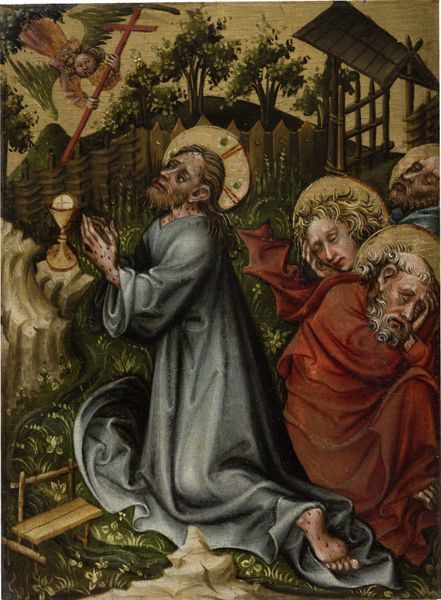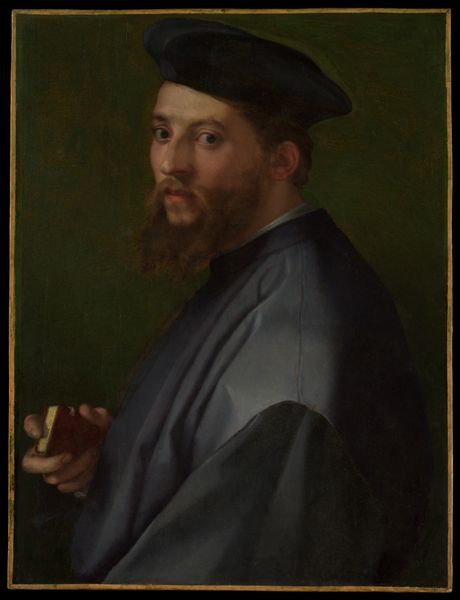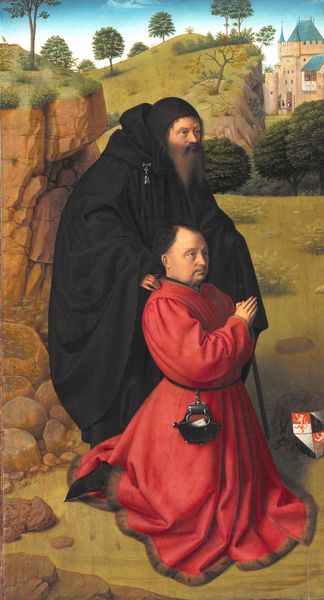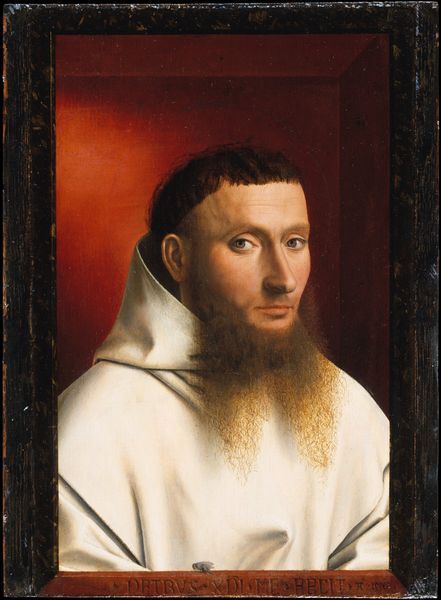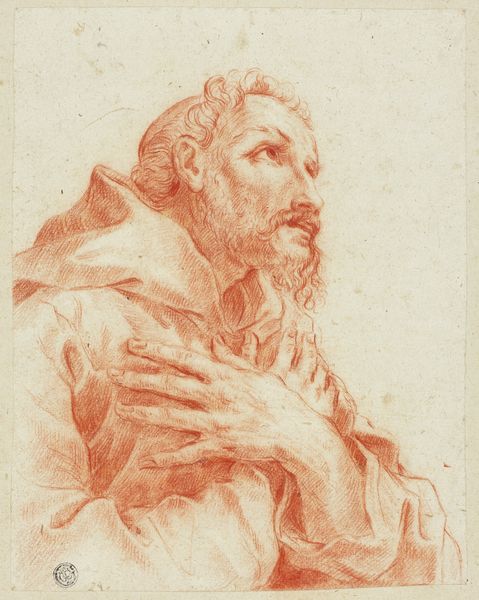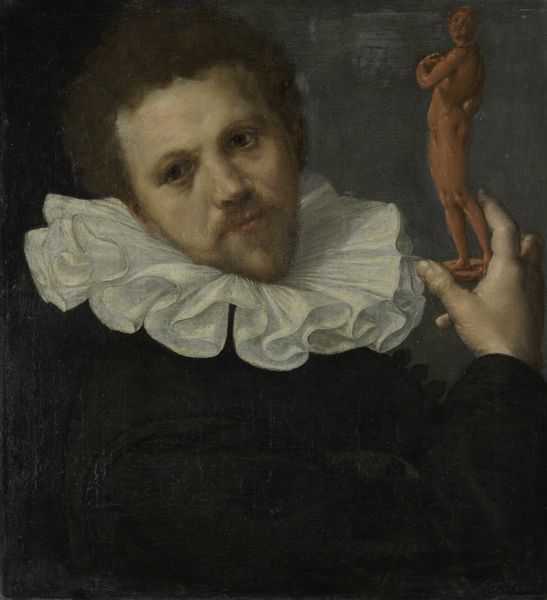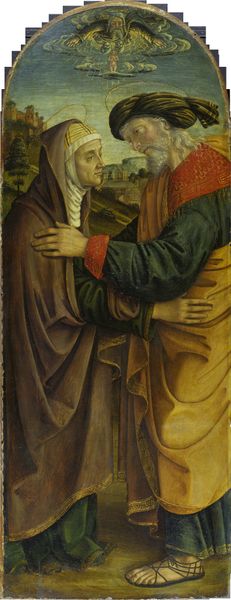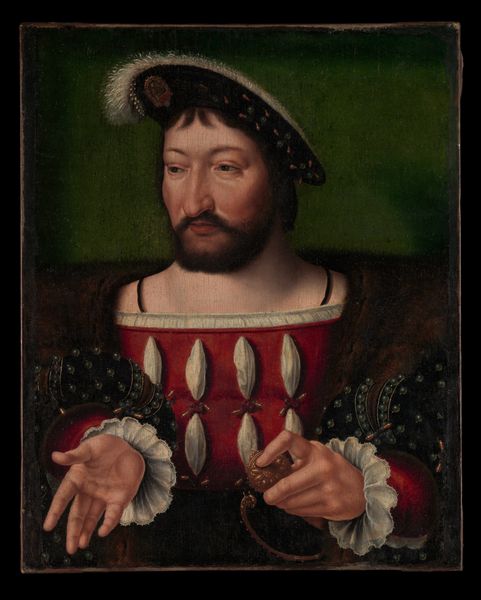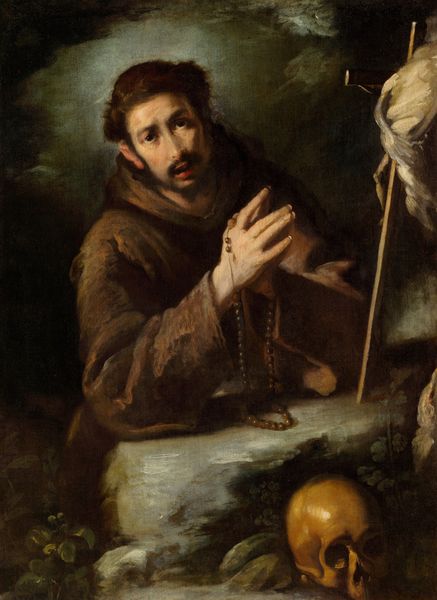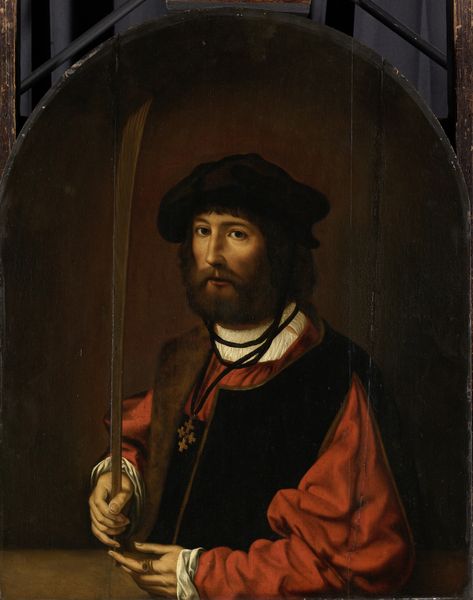
painting, oil-paint
#
portrait
#
baroque
#
painting
#
oil-paint
#
oil painting
#
history-painting
Copyright: Public domain
Curator: Looking at this, I immediately feel drawn in by the sheer density of textures, all those earthly colors...it evokes something grounded yet spiritual, like staring into sun-baked clay. Editor: Exactly! What we have here is Juan Bautista Maíno's "Santo Domingo De Guzmán", painted around 1614. The oil on canvas reveals much about artistic production during that period. It hangs today in the Museo del Prado in Madrid. Curator: There's a story being told through the tangible materials, not just symbolism. The careful layering of oils, almost a visible process of devotional labour! He clutches the model church to himself in an odd pose, almost like a reluctant toddler asked to share a favorite toy! Editor: Right, it’s important to consider Maíno's social context too. His position straddling religious and courtly circles informed his work with a distinct interest in realism while idealizing Church power and saintly individuals. He makes very calculated use of precious materials like oil paint to elevate his status in society by the mere expense of this devotional object. Curator: You're completely right; the painting's realism is key. Look at how Santo Domingo is depicted – there’s something profoundly human, almost vulnerable in his expression, yet the looming model of what is almost like an architectural plaything still conveys this overwhelming authority and architectural force, all presented with meticulous artistry. I get this curious feeling like I'm in an illusion: he's so human, and I can imagine smelling and touching the earth with this saint but also feel him looming over my world! Editor: Indeed, and I believe Maíno emphasizes materials to speak to audiences about social order and labor through visual rhetoric: He presents Domingo as both visionary and architect, crafting his influence both literally, holding this object, but also abstractly with this almost godlike architectural presence. And if we examine the craftsmanship and patronage behind such baroque portraits, questions arise concerning the commodification of faith and the material means of achieving it in early modern society. Curator: Mmm, the piece lingers in the mind in ways I hadn't quite expected, a compelling image that challenges conventions as it elevates them. Editor: Well said! For me, examining "Santo Domingo De Guzmán" reaffirms that we cannot understand history or devotion without studying how it was produced through art in paint, labor, and social influence.
Comments
No comments
Be the first to comment and join the conversation on the ultimate creative platform.
